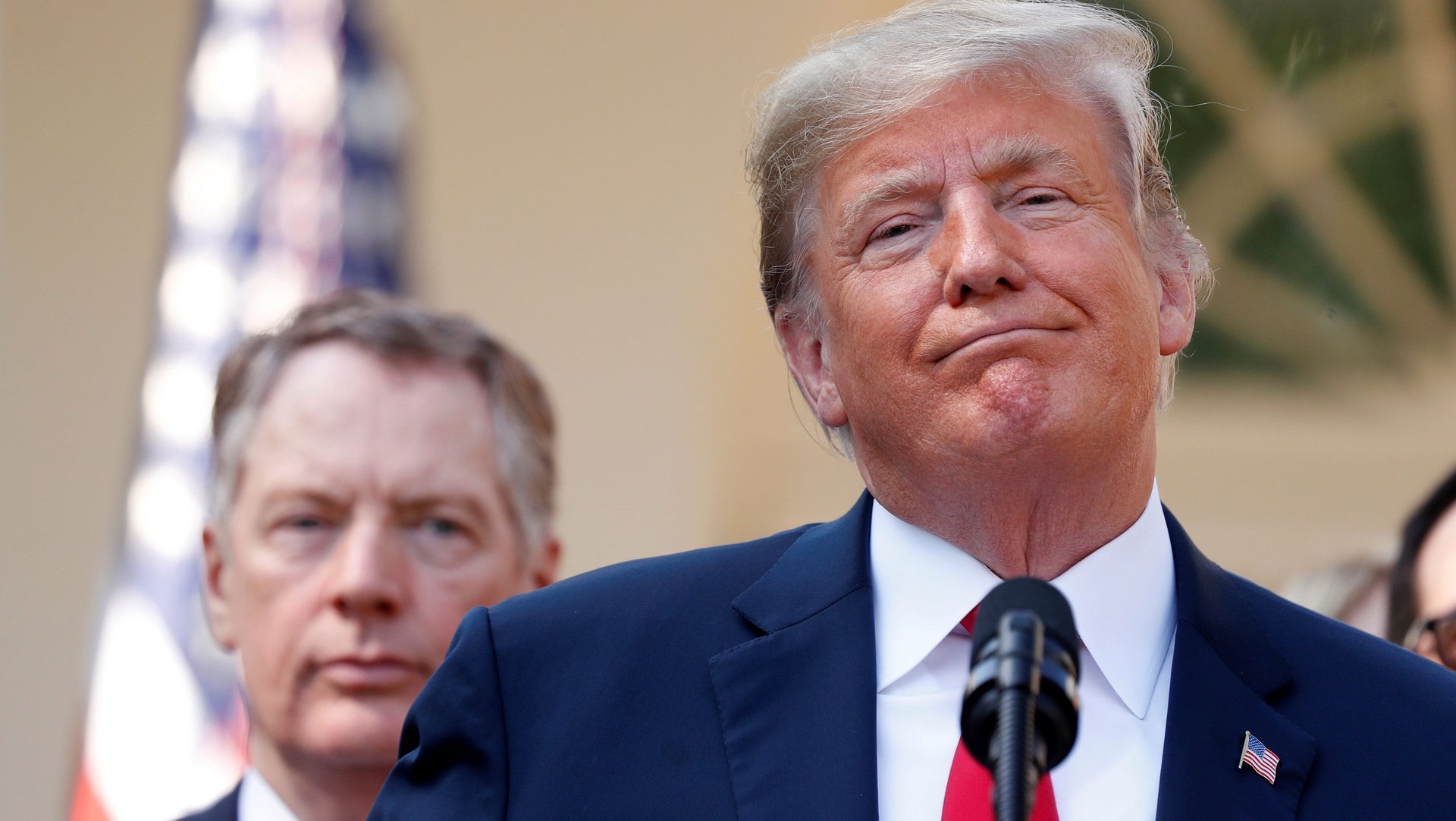Trump credits tariffs for his USMCA free trade deal
Donald Trump just reached the biggest free-trade deal in his administration, the US-Mexico-Canada Agreement.


Donald Trump just reached the biggest free-trade deal in his administration, the US-Mexico-Canada Agreement.
But don’t expect him to give up on tariffs. The president sees the USMCA, as the agreement is known, as proof that tariffs work.
“Without tariffs we wouldn’t be talking about a deal,” he said today, after calling those who opposed the tariffs “babies.”
Tariffs are traditionally viewed as a way to protect domestic producers—and that’s what the Trump administration argued when it imposed the steel and aluminum taxes. But in his speech announcing the deal, Trump also spoke of tariffs as leverage to force trading partners to give in to US demands. “In many cases, we won’t even have to use them,” he said. “That’s how powerful they are.”
That’s because the US market is too attractive a place to do business for countries risk losing access to. “It’s a privilege for them to come in and attack the piggy bank,” he said.
Mexico and Canada were among the countries subject to Trump’s steel and aluminum tariffs—and they still are, though they are working with the US to remove them.
The president said the trade taxes are making other countries rethink their stance, including India, which he said charges “tremendously high tariffs” but now wants to strike a deal with the US. Tariffs will also hang as a threat to the European Union as it negotiates with the US on auto exports to the US. If the two parties can’t reach a deal, “we will respectfully put tariffs on the cars,” Trump said.
Canada and Mexico don’t have to worry about auto tariffs, at least. The two countries secured some protections for that industry in side letters to USMCA.